Blog - Managing a Digital Overload in Healthcare Networks
Christmas is 5 months away, so it feels like a good time to ask the question - are hospital Wi-Fi networks just like my Christmas tree?
Over the years I’ve accumulated some fantastic ornaments that adorn my Christmas tree, it’s never felt strange in the middle of summer to nip in a Christmas shop whilst away to pick up a trinket, in fact we must do it now. We’re improving the tree’s decorations every year! More lights, more baubles, more things my little one must put on there.
So here is the thing my tree is really starting to groan under the pressure of the added demands added to it. A bit like the NHS’s wireless estate. The network is like the tree in many respects, it was bought for a specific capacity, however the speed at which additional connected devices, data hungry services and applications have been brought on mean it is facing similar challenges. Both are struggling to stay up with the weight of what’s been placed on it, branches are at risk of breaking and load balancing is increasingly challenging.
This light-hearted comparison so far might hide the serious implications to NHS Trusts as the newly acquired tech in a modern hospital aren’t shiny ornaments but core workings of a hospital in the clinical process, building management and patient journey. The alphabet soup of acronyms for these services is vast if we look at PACS (Picture Archiving and Communications Systems), IEP (Image Exchange Portal), EHRs (electronic health records), EPS (electronic Prescription services), IOT Smart patient monitors, RFID and Bluetooth ATS (asset tracking systems), CCTV and access control systems. The NHS digital transformation is in full swing and its clear to see how important these digital services are.
Much like the Christmas tree the network these services hang on will often have grown organically. It will have been bolstered with ad hoc add-ons of access points, controllers, switches, and associated licenses. The extension of these licenses separately to the hardware whilst sweating assets can prove the economic path of least resistance whilst not necessarily providing the solution best suited to the acquired technology. Replacing a branch of the tree is unlikely to solve the signs of strain if that tree is simply too small and old for the current weight of the tasks it must perform. The truth is that there will be time the tree will need to be replaced before it topples as it’s not the pet cat at risk of a shock as it sleeps under it but genuine clinical care and, as shown in recent cyber security attacks in other sectors, access to physical infrastructure.
So, what might that look like and what could its financial impact be? What is the impact of a consultant having to wait much longer for medical images in a consultation or those images having to be attempted multiple times as signals drop under the strain? Slower appointments? less patients seen in a working day or week? A negative patient journey and not getting the care they need. How does that reduced efficiency extrapolate out to a working year across multiple departments? What are the cost implications to that and importantly patient impact to care? Is it a need for more clinics? Longer clinics or longer patient waiting times?
So, what can be done to ensure the tree and the network are fit for future Christmases? Well, I buy my tree every year, I look at the state of the tree last year and think was that the right size for my needs? And I think about the new fancy connected lights I picked up in the boxing day sales and then it’s the buying part. We know our budget and the key stake holders of the Nesbitt House go and get a feel for what’s out there in the market. We weigh up our options before buying.
Now if only it was that simple for technology stakeholders in the NHS! As long-term partners to many NHS organisations we know it’s not that simple and certainly a lot more important. Long term thinking is critical when planning this kind of network. The Wi-Fi network and the layers of network below that will no doubt be in for many Christmases.
The market in Wi-Fi technology and how it’s managed has changed dramatically in recent years, with the best players in the market utilising game changing AI technologies and unifying management platforms. So as an IT Professional working in healthcare (and likely ANY public sector organisation) it’s going be vital for you too.
Some suggestions:
- Regularly assess the current network’s capacity against its future demands.
- Engage multiple stakeholders in your organisation to understand what the future demands of upcoming digital health initiatives.
- Keep up to date with emerging technologies and the impact they could have on your environment.
- Consider a partner with experience and understanding of working in the healthcare environment and the unique challenges it brings.
With the right planning you can put in place the right “tree” to support the future of your organisation, save yourself and the team from picking up the digital ornaments that have fallen off the tree.
Written by Sean Nesbitt, Business Development Manager at TNP.


